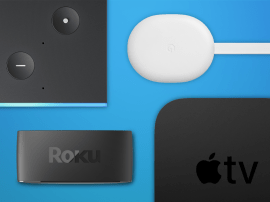What is spatial audio and how does the 360-degree sound tech work?
All you need to know about spatial audio - the sound surround tech that's appearing in a lot more places including on streaming services

Spatial audio is getting a big push at the minute. Apple promises the tech can make songs sound more immersive, making the joy of listening all the more joyful and improving your experience with even the very best true wireless earphones and headphones. In reality, there are a few things you should know about spatial audio – and fundamentally, whether it’s worth your money. Here, we dissect the ifs and buts to say whether the tech is worth your time.
In its simplest form, spatial audio is a way of creating and listening to sound in 360 degrees. It mimics how we hear sound in everyday life. When you walk down the street, you will usually hear cars zooming to your right, random chatter behind you, the sound of your footsteps below and birds chirping in trees above your head. It’s not a 2D experience.
Spatial audio usually comes in two forms, binaural and object-based. Binaural sound is audio that has depth and direction. It’s usually used in headphones to create distance and movement – a voice that begins by speaking behind your head then moves to the front, for example. Object-based audio is multi-dimensional, where each individual sound occupies a specific place in a soundscape. That could be a plane above your head or the crunch of grass below your feet. Will you notice the difference? Probably not.
While spatial audio is a relatively simple concept, it’s difficult to create. To properly optimise music for Apple Spatial Audio, for example, a song needs to be mixed in Dolby Atmos.
Most movies already come mixed and optimised for cinema surround sound. Music is more commonly produced with car stereos, laptop speakers and phones in mind over hi-tech spatial set ups. With that in mind, you’ll need to be a dedicated audiophile to invest.
Where did it come from?
In essence, spatial audio offers a richer, more immersive listening experience and can offer greater depth, height and width. It’s usually what you hear in Dolby-equipped cinemas or home viewing setups, where speech, music and audio effects come at you from all different angles.
It’s not exactly a new innovation, though. Some examples of spatial audio date back to the mid-1500s, with composers arranging choirs and instrumentalists in varying locations. For a long time, experimentations in spatial audio were largely the pursuit of sound artists such as Karlheinz Stockhausen, who proposed that the space a piece of music was produced in could be an instrument in itself.
In the world of cinema, Dolby has long experimented with the format. In 2012, Dolby unveiled Atmos, which allowed for sound to move between speakers placed in front of, beside, behind and above the listener. There’s also DTS:X, which offers multi-dimensional surround sound for home cinema and gaming sessions.
Where can I listen to spatial audio?

In recent years, Apple has majorly pushed on spatial. Artists such as Billie Eilish, The Weeknd, Elton John and Iggy Pop have all had their tracks remade for Apple Spatial Audio – a list of optimised tracks is available here. In the grand scheme of things, though, only a very small handful of Apple Music’s library is available in spatial audio.
Apple did not invent the tech, but it has worked hard to develop its own technology to accommodate it. The AirPods Pro (1st or 2nd generation), AirPods Max, AirPods (3rd generation) and Beats Fit Pro use built-in gyroscopes to track your head and adjust the audio. The 2023 HomePod (2nd generation) also supports it as does the Sonos Era 300.
Others have joined the fray too. Tidal has partnered with Sony to present 360 Reality Audio, which is what Sony calls object-based spatial audio tech. 360 Reality Audio only requires a smartphone, Tidal HiFi Plus membership and a set of headphones to work.
There are some non-Apple products that could best suit your spatial audio needs. Samsung’s latest Galaxy Buds 2 Pro comes with 360 Audio feature. Google has also made spatial sound available on Pixel 6 and 6 Pro. The HyperX Cloud Alpha can accommodate 3D sound for gaming, while the LG Tone Free T9OQ earbuds are a great in-ear set for gamers.


